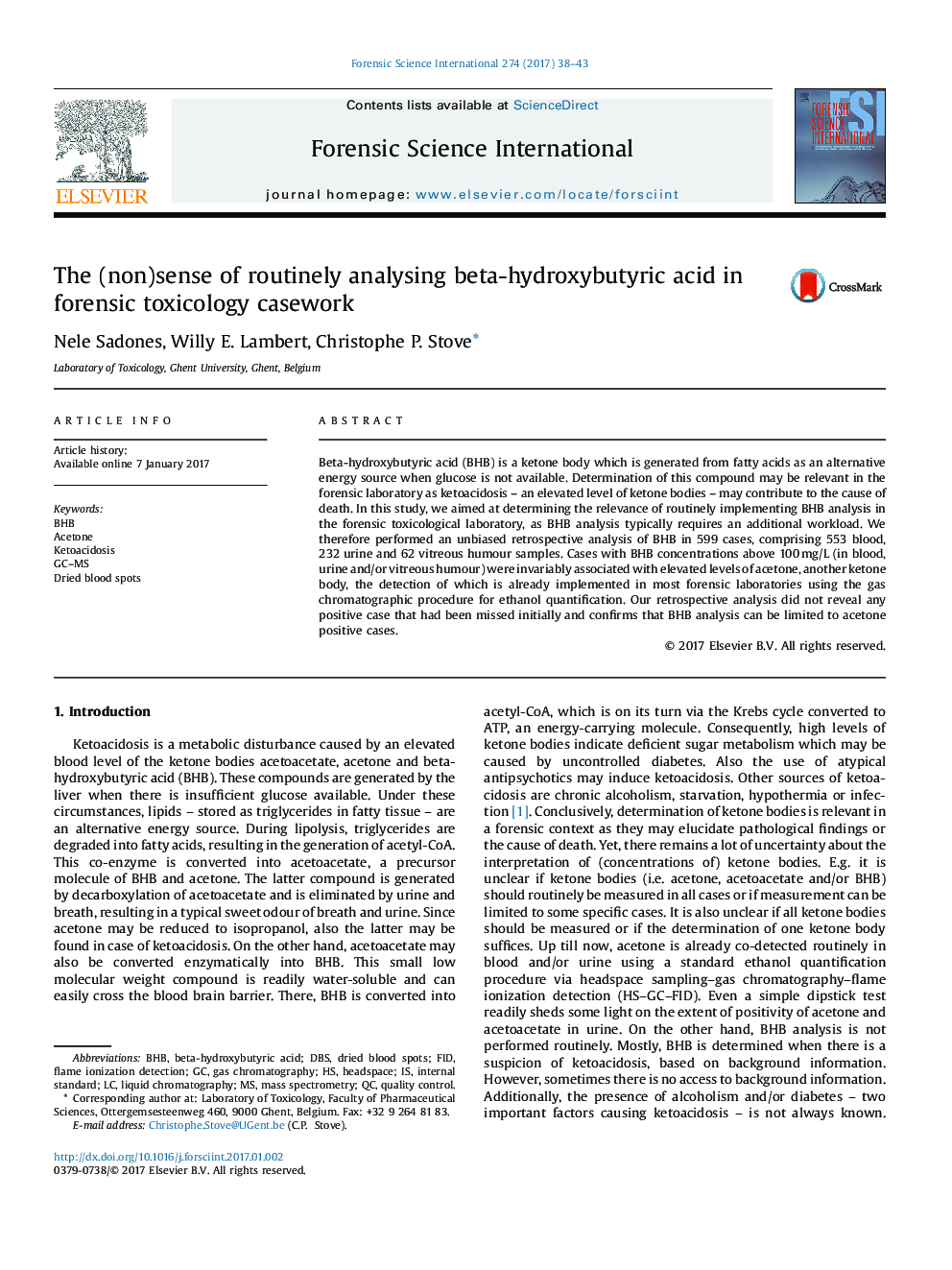| کد مقاله | کد نشریه | سال انتشار | مقاله انگلیسی | نسخه تمام متن |
|---|---|---|---|---|
| 6462486 | 1421976 | 2017 | 6 صفحه PDF | دانلود رایگان |
- The ketone body acetone is a good initial marker for ketoacidosis.
- Determination of BHB, another ketone body, can be limited to acetone positive cases.
- Vitreous humour is a good alternative for blood for BHB analysis.
- Interpretation of BHB urinary concentrations is not straightforward.
- Dried matrix spots are suitable samples for BHB analysis.
Beta-hydroxybutyric acid (BHB) is a ketone body which is generated from fatty acids as an alternative energy source when glucose is not available. Determination of this compound may be relevant in the forensic laboratory as ketoacidosis - an elevated level of ketone bodies - may contribute to the cause of death. In this study, we aimed at determining the relevance of routinely implementing BHB analysis in the forensic toxicological laboratory, as BHB analysis typically requires an additional workload. We therefore performed an unbiased retrospective analysis of BHB in 599 cases, comprising 553 blood, 232 urine and 62 vitreous humour samples. Cases with BHB concentrations above 100Â mg/L (in blood, urine and/or vitreous humour) were invariably associated with elevated levels of acetone, another ketone body, the detection of which is already implemented in most forensic laboratories using the gas chromatographic procedure for ethanol quantification. Our retrospective analysis did not reveal any positive case that had been missed initially and confirms that BHB analysis can be limited to acetone positive cases.
Journal: Forensic Science International - Volume 274, May 2017, Pages 38-43
